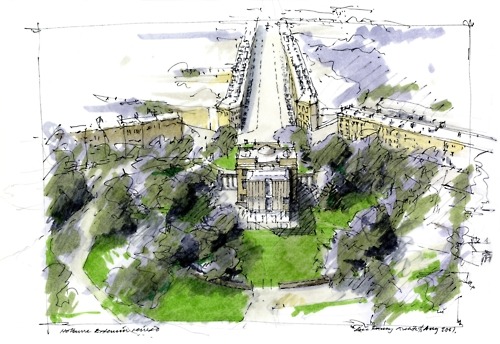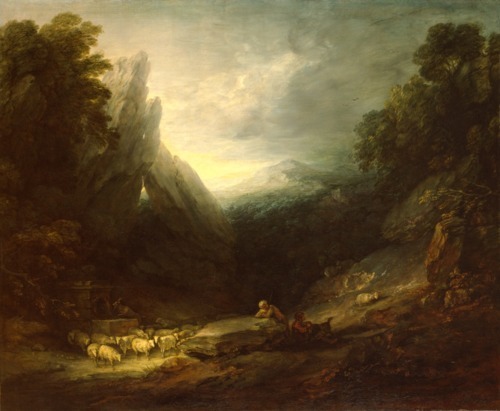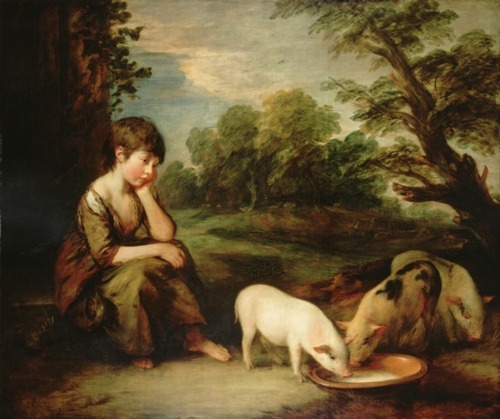Gainsborough may be known for his portraits of the Kings and Queens of the 18th century, but it is landscapes and pastoral characters – animals and human – that he really wanted to paint. Bath and its lush Somerset setting provided him with plenty of inspirational juice in the later part of his life, from 1759 onwards, to “enjoy the fag end of life in quietness and ease”. But only after he had proved his worth painting what the masses wanted: the rich and famous. And who said celebrity obsession was a new phenomenon?!

Sketch of the Holburne extension (Eric Parry)
Bath’s bite-sized and beautiful Holburne Museum underwent an extremely successful extension several years ago. A glass box, seemingly overflowing with water, has been added onto the back of the building overlooking the garden –Pleasure Gardens back in Bath’s social butterfly heyday – and is tastefully hidden from view as one approaches from Great Pulteney Street behind the museum’s coffee-coloured façade. From inside it is very easy to glide from the old section to the new without realising we are transitioning architecturally from past to present.
The Holburne is celebrating its local Great with the exhibition Themes and Variations, six choice paintings that explore the evolution of Gainsborough’s landscape compositions and some of his favourite and recurring motifs. The paintings are supplemented with sketches and drawings that demonstrate how progressive he was in his use of media – chalk, watercolours and engravings are all used, sometimes in the same work. Gainsborough was remarkable for the speed at which he reportedly applied the paint to canvas and also for the fact that he painted from observations rather than doggedly sticking to the rules of art school.
Gainsborough’s gradual progression from being influenced by the Dutch landscape painters to developing his own style, which is very much more otherworldly and dreamlike, is chartered well and explained in simple and clear terms with accompanying blurbs. The last piece of the exhibition is the long-windedly named Mountainous Landscape with Shepherds and Sheep: “Romantic Landscape” – the work by which he wanted to be both remembered and judged.

Romantic Landscape
Another highlight is the little lady in Girl with Pigs with her precocious but quiet poise, where Gainsborough’s genius as a portraitist is evident. And in Landscape with a View of a Distant Village, we get a glimpse of Gainsborough’s cheeky side – his playful representation of the shapely bottom of a milkmaid as the wind blows her dress in a ‘convenient’ direction against her body.

Girl with Pigs
His fascination with ordinary country folk also sets him apart from the majority of his contemporaries. Could this have been a possible influence from William Hogarth – famed for his satirical depictions of London’s underclass – under whose tutelage he had been in his youth?
Even his name calls to mind a revered talent and timelessness that will survive the ages and the regular shuttling of his paintings between the National galleries of England and beyond. Hop on a train immediately to take in this concise collection and the rest of Sir Thomas William Holburne’s personal collection of artifacts – as well as the rather delicious food on offer in the adjoining café – and enjoy a day out in the sumptuous Bath Spa. Until January 8th.
